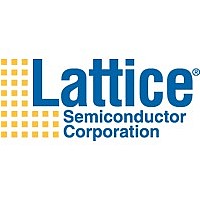LFE2M50E-PS-EVN Lattice, LFE2M50E-PS-EVN Datasheet - Page 56

LFE2M50E-PS-EVN
Manufacturer Part Number
LFE2M50E-PS-EVN
Description
Programmable Logic IC Development Tools LatticeECP2M PCI Express Dev Kit
Manufacturer
Lattice
Datasheet
1.LFE2M50E-PS-EVN.pdf
(77 pages)
Specifications of LFE2M50E-PS-EVN
Rohs
yes
Tool Is For Evaluation Of
LatticeECP2M-50
Factory Pack Quantity
1
- Current page: 56 of 77
- Download datasheet (2Mb)
Running the PCI Express DMA Demos
LatticeECP2M PCI Express Development Kit User’s Guide
Figure 13: DMA Demo Block Diagram
Scatter-Gather DMA Overview
Hardware devices perform Direct Memory Access (DMA) by initiating read/
write bus transactions. DMA means transferring data to and from system
memory directly, without involving the CPU.
Bus Master DMA means the device (the PCIe Core on the board) is
controlling the bus and doing the data transfers. In order to perform the
transfer, an address is needed and a length. The SGDMA is configured by the
software driver. The addresses known to software for describing a buffer's
location in memory are only relevant in the domain of the CPU. The CPU (and
software) view memory as virtual 2 GB address spaces per process - the
DMA needs physical memory addresses.
When software allocates a large buffer of memory, the memory manager finds
the number of required free pages (4KB per page) in system memory and
makes them appear contiguous to software via virtual memory translation
tables in hardware. A 1MB buffer alocated by user software appears
contiguous to the software, but in reality is scattered throughout physical
system memory in discontinuous 4KB chunks. The magic of virtual memory
makes it appear contiguous to software.
Demonstrate Windows driver and system programming so users can
extend software for their own particular system needs
System memory allocation (Memory Descriptor Lists)
Interrupt handling - ISRs and DPCs
DMA Demo Operations Overview
48
Related parts for LFE2M50E-PS-EVN
Image
Part Number
Description
Manufacturer
Datasheet
Request
R
Part Number:
Description:
IC, LATTICEECP2M FPGA, 420MHZ, FPBGA-900
Manufacturer:
LATTICE SEMICONDUCTOR
Datasheet:
Part Number:
Description:
IC, LATTICEECP2M FPGA, 420MHZ, FPBGA-484
Manufacturer:
LATTICE SEMICONDUCTOR
Datasheet:

Part Number:
Description:
Development Software SERDES Eval Board
Manufacturer:
Lattice

Part Number:
Description:
MCU, MPU & DSP Development Tools LatticeECP2M50 SERDES EVAL BRD
Manufacturer:
Lattice

Part Number:
Description:
MCU, MPU & DSP Development Tools LatticeECP2M50 PCI Express x4 EVAL BRD
Manufacturer:
Lattice
Part Number:
Description:
FPGA LatticeECP2M Family 48000 Cells 90nm (CMOS) Technology 1.2V 672-Pin FBGA
Manufacturer:
LATTICE SEMICONDUCTOR
Datasheet:
Part Number:
Description:
FPGA LatticeECP2M Family 48000 Cells 90nm (CMOS) Technology 1.2V 484-Pin FBGA
Manufacturer:
LATTICE SEMICONDUCTOR
Datasheet:

Part Number:
Description:
IC FPGA 50KLUTS 372I/O 672-BGA
Manufacturer:
Lattice
Datasheet:

Part Number:
Description:
IC FPGA 50KLUTS 270I/O 484-BGA
Manufacturer:
Lattice
Datasheet:

Part Number:
Description:
IC FPGA 50KLUTS 270I/O 484-BGA
Manufacturer:
Lattice
Datasheet:

Part Number:
Description:
IC FPGA 50KLUTS 372I/O 672-BGA
Manufacturer:
Lattice
Datasheet:

Part Number:
Description:
IC FPGA 50KLUTS 270I/O 484-BGA
Manufacturer:
Lattice
Datasheet:

Part Number:
Description:
IC FPGA 50KLUTS 270I/O 484-BGA
Manufacturer:
Lattice
Datasheet:










